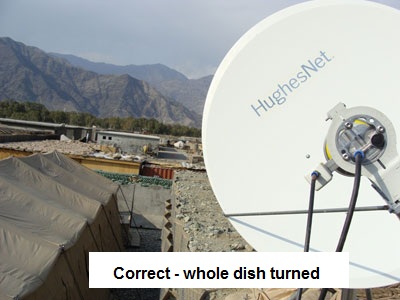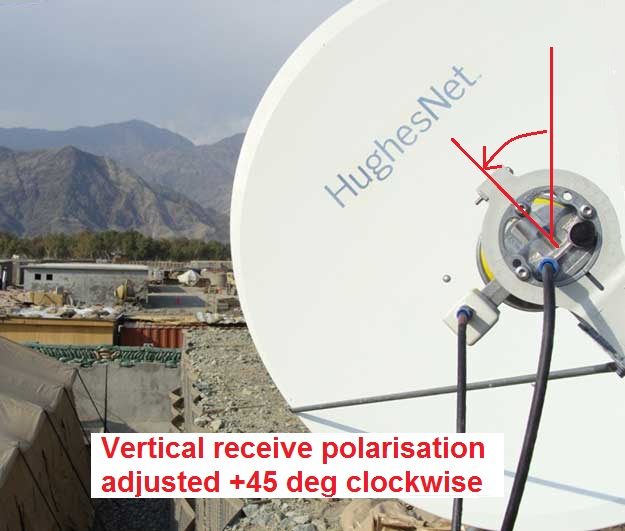Satellite Internet Forum.
Welcome, Guest. Forum rules.To search this site click here > SATSIG search
| Home Login Register |
| Satellite Internet forum › HughesNet and Hughes HX VSATs › Turbo Code 256K 2/3 |
|
Pages: 1
|
Turbo Code 256K 2/3(Read 14297 times) |
|
bray620
Member
★★ Offline Posts: 13 |
Feb 23rd, 2010 at 5:09pm
|
| Back to top |
IP Logged
|
|
bray620
Member
★★ Offline Posts: 13 |
Reply #1 - Feb 23rd, 2010 at 5:11pm
|
| Back to top |
IP Logged
|
|
USN - Retired
YaBB Moderator
★★★★★ Offline Posts: 837 Kentucky (USA) |
Reply #2 - Feb 23rd, 2010 at 5:18pm
|
| Back to top |
USN (Ret)
IP Logged
|
|
bray620
Member
★★ Offline Posts: 13 |
Reply #3 - Feb 23rd, 2010 at 5:27pm
|
| Back to top |
« Last Edit: Feb 27th, 2015 at 12:09pm by Admin1 »
IP Logged
|
|
bray620
Member
★★ Offline Posts: 13 |
Reply #4 - Feb 23rd, 2010 at 5:32pm
|
| Back to top |
« Last Edit: Feb 27th, 2015 at 12:18pm by Admin1 »
IP Logged
|
|
USN - Retired
YaBB Moderator
★★★★★ Offline Posts: 837 Kentucky (USA) |
Reply #5 - Feb 23rd, 2010 at 6:07pm
|
| Back to top |
« Last Edit: Jul 3rd, 2020 at 9:50am by Admin1 »
USN (Ret)
IP Logged
|
|
bray620
Member
★★ Offline Posts: 13 |
Reply #6 - Feb 23rd, 2010 at 6:45pm
|
| Back to top |
« Last Edit: Feb 27th, 2015 at 12:17pm by Admin1 »
IP Logged
|
|
USN - Retired
YaBB Moderator
★★★★★ Offline Posts: 837 Kentucky (USA) |
Reply #7 - Feb 23rd, 2010 at 7:07pm
|
| Back to top |
USN (Ret)
IP Logged
|
|
bray620
Member
★★ Offline Posts: 13 |
Reply #8 - Feb 23rd, 2010 at 7:15pm
|
| Back to top |
« Last Edit: Feb 27th, 2015 at 12:18pm by Admin1 »
IP Logged
|
|
bray620
Member
★★ Offline Posts: 13 |
Reply #9 - Feb 23rd, 2010 at 7:22pm
|
| Back to top |
IP Logged
|
|
bray620
Member
★★ Offline Posts: 13 |
Reply #10 - Feb 23rd, 2010 at 7:30pm
|
| Back to top |
« Last Edit: Feb 27th, 2015 at 12:21pm by Admin1 »
IP Logged
|
|
USN - Retired
YaBB Moderator
★★★★★ Offline Posts: 837 Kentucky (USA) |
Reply #11 - Feb 23rd, 2010 at 7:35pm
|
| Back to top |
« Last Edit: Feb 27th, 2015 at 12:20pm by Admin1 »
USN (Ret)
IP Logged
|
|
bray620
Member
★★ Offline Posts: 13 |
Reply #12 - Feb 24th, 2010 at 2:58am
|
| Back to top |
« Last Edit: Feb 27th, 2015 at 12:20pm by Admin1 »
IP Logged
|
|
USN - Retired
YaBB Moderator
★★★★★ Offline Posts: 837 Kentucky (USA) |
Reply #13 - Feb 24th, 2010 at 4:20am
|
| Back to top |
USN (Ret)
IP Logged
|
|
bray620
Member
★★ Offline Posts: 13 |
Reply #14 - Feb 24th, 2010 at 5:28am
|
| Back to top |
« Last Edit: Feb 27th, 2015 at 12:20pm by Admin1 »
IP Logged
|
|
James-BW
Senior Member
★★★ Offline Posts: 65 |
Reply #15 - Feb 24th, 2010 at 9:16am
|
| Back to top |
www.freedomsat.com a high-speed Satellite Internet solution that delivers fast and reliable internet to difficult to connect spots around the world.
IP Logged
|
|
Admin1
YaBB Admin
★★★★★ Offline Posts: 1252 |
Reply #16 - Feb 24th, 2010 at 9:18am
|
| Back to top |
« Last Edit: Jul 3rd, 2020 at 9:50am by Admin1 »
IP Logged
|
|
Admin1
YaBB Admin
★★★★★ Offline Posts: 1252 |
Reply #17 - Feb 24th, 2010 at 9:27am
|
| Back to top |
« Last Edit: Jul 3rd, 2020 at 9:50am by Admin1 »
IP Logged
|
|
USN - Retired
YaBB Moderator
★★★★★ Offline Posts: 837 Kentucky (USA) |
Reply #18 - Feb 24th, 2010 at 11:30am
|
| Back to top |
« Last Edit: Feb 27th, 2015 at 12:25pm by Admin1 »
USN (Ret)
IP Logged
|
|
Eric Johnston
Senior Member
★★★ Offline Posts: 2109 |
Reply #19 - Feb 24th, 2010 at 12:20pm
|
| Back to top |
« Last Edit: Jul 3rd, 2020 at 9:51am by Admin1 »
IP Logged
|
|
bray620
Member
★★ Offline Posts: 13 |
Reply #20 - Feb 24th, 2010 at 2:13pm
|
| Back to top |
IP Logged
|
|
USN - Retired
YaBB Moderator
★★★★★ Offline Posts: 837 Kentucky (USA) |
Reply #21 - Feb 24th, 2010 at 2:40pm
|
| Back to top |
« Last Edit: Feb 19th, 2015 at 8:52pm by Admin1 »
USN (Ret)
IP Logged
|
|
Eric Johnston
Senior Member
★★★ Offline Posts: 2109 |
Reply #22 - Feb 24th, 2010 at 3:36pm
|
| Back to top |
« Last Edit: Jul 3rd, 2020 at 9:51am by Admin1 »
IP Logged
|
|
USN - Retired
YaBB Moderator
★★★★★ Offline Posts: 837 Kentucky (USA) |
Reply #23 - Feb 24th, 2010 at 4:08pm
|
| Back to top |
USN (Ret)
IP Logged
|
|
USN - Retired
YaBB Moderator
★★★★★ Offline Posts: 837 Kentucky (USA) |
Reply #24 - Mar 18th, 2010 at 12:30pm
|
| Back to top |
« Last Edit: Feb 19th, 2015 at 8:53pm by Admin1 »
USN (Ret)
IP Logged
|
|
Pages: 1
|
Email me: eric@satsig.net
Powered by YaBB 2.5.2!
YaBB Forum Software © 2000-. All Rights Reserved.
Disclaimer, Terms of Use and Privacy Forum User Agreement Forum rules Cookie policy.






